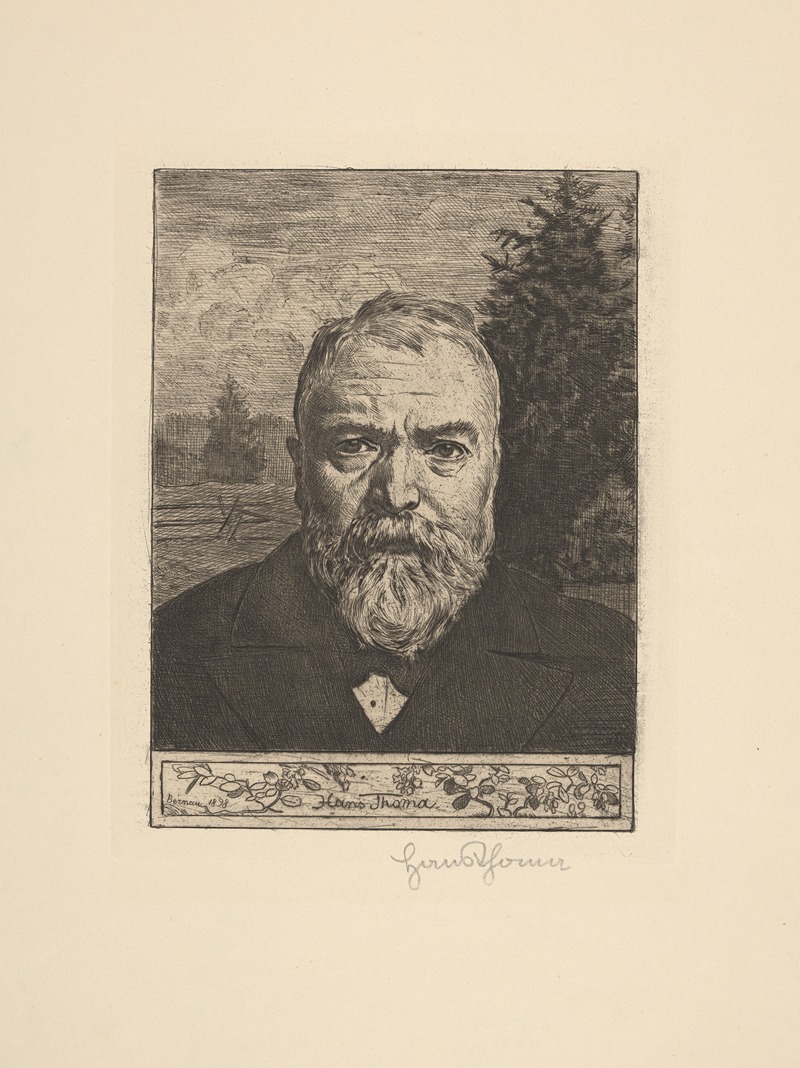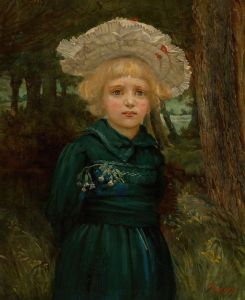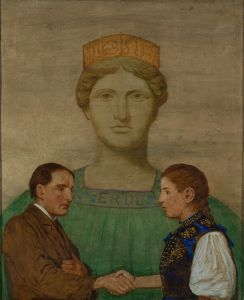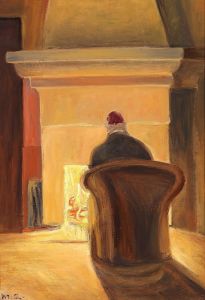
Self-portrait
A hand-painted replica of Hans Thoma’s masterpiece Self-portrait, meticulously crafted by professional artists to capture the true essence of the original. Each piece is created with museum-quality canvas and rare mineral pigments, carefully painted by experienced artists with delicate brushstrokes and rich, layered colors to perfectly recreate the texture of the original artwork. Unlike machine-printed reproductions, this hand-painted version brings the painting to life, infused with the artist’s emotions and skill in every stroke. Whether for personal collection or home decoration, it instantly elevates the artistic atmosphere of any space.
Hans Thoma (1839–1924) was a German painter associated with the Realist and Symbolist movements. His self-portrait, titled Self-portrait by Hans Thoma, is one of the many works in which he depicted himself, showcasing his artistic style and personality. Painted in 1899, this self-portrait reflects Thoma's mature period as an artist, during which he gained recognition for his detailed and naturalistic approach to portraiture and landscapes.
In the painting, Thoma presents himself in a direct and straightforward manner, characteristic of his Realist tendencies. He is depicted with a calm and introspective expression, wearing simple attire that emphasizes his modest and grounded personality. The background of the portrait is relatively plain, ensuring that the focus remains on the artist's face and upper body. This simplicity aligns with Thoma's preference for clarity and sincerity in his art, avoiding excessive embellishment or dramatic effects.
Thoma's self-portraits are notable for their honesty and lack of idealization. In this work, he portrays himself as he was in his sixties, with visible signs of aging such as wrinkles and a receding hairline. This unvarnished representation reflects his commitment to realism and his interest in capturing the truth of human experience. The painting also conveys a sense of introspection, suggesting that Thoma used self-portraiture as a means of self-exploration and reflection.
Hans Thoma was deeply influenced by the landscapes and culture of his native Black Forest region in Germany, and this connection to his roots is evident in much of his work. While this particular self-portrait does not include overt references to the Black Forest, it embodies the simplicity and authenticity that characterized his artistic vision. Thoma's work often bridged the gap between traditional German art and emerging modernist trends, and his self-portraits serve as a testament to his ability to balance these influences.
Today, Self-portrait by Hans Thoma is housed in the Staatliche Kunsthalle Karlsruhe, a museum in Karlsruhe, Germany, which holds a significant collection of Thoma's works. The painting is appreciated for its technical skill, emotional depth, and insight into the artist's character. It remains an important example of late 19th-century German portraiture and a valuable piece of Thoma's artistic legacy.


















